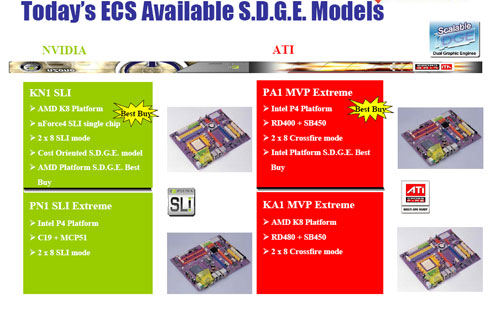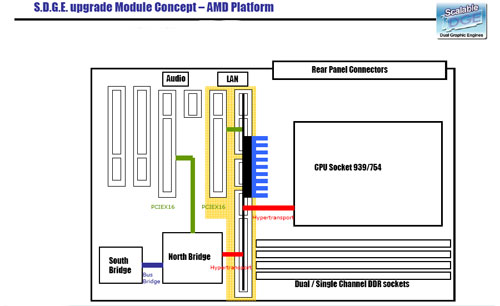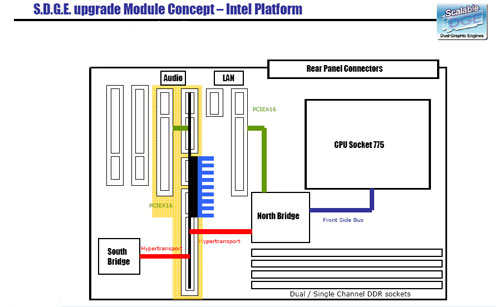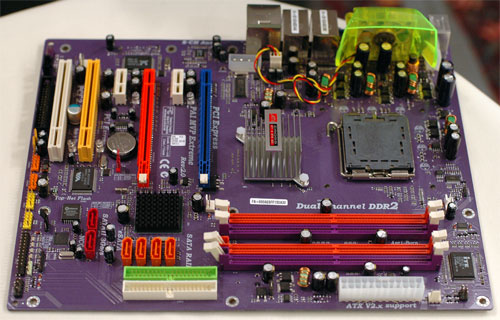
Original Link: https://www.anandtech.com/show/1779
Editors Day 2005: A “NEW” ECS Looks to the Future
by Wesley Fink on September 2, 2005 12:05 AM EST- Posted in
- Motherboards
As the third largest motherboard maker in the world, ECS has always had the resources to pursue whatever direction they choose. In the past, that choice has been solid value motherboards, which provide quality and good value for the buyer. This has made ECS a major player in the Asian, South American, and European markets where tariffs and high prices relative to income make motherboards more relatively expensive than they are in the US. However, in the US market, ECS is often viewed as a low-cost, low-feature brand, and much of US sales come from the OEM market - ECS making motherboards and systems for others.
ECS has talked for some time about breaking new ground in the US market, and recently, they have also been hawking their Extreme series motherboards - boards designed with more of an eye to computer enthusiasts that still give great bang for the buck. We have said many times that it takes more than calling a board "Extreme" to make it so, but ECS has been improving the Extreme series and even won an Editors Choice for the ECS PF4 915P Extreme in last December's Intel 915 roundup. ECS keeps assuring the market that the change in direction for ECS is real, and to prove it, they invited AnandTech and about 20 other Editors to the very first ECS Editors Day in San Jose, California. The theme was the "New ECS".
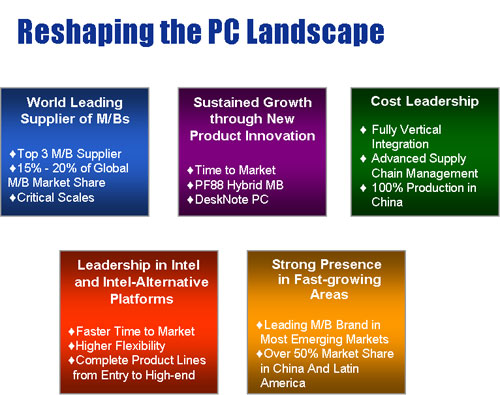
SLI, Crossfire, and S.D.G.E.
ECS used Editor's Day to highlight all of their new "dual-graphics" motherboards - both AMD and Intel - for NVIDIA SLI and ATI Crossfire.Some manufacturers are producing just one or two flavors of these dual-video configurations, but ECS announced that they will be supporting all four possible configurations.
In addition, ECS presented one of the most innovative products that we have seen in a while in their Scalable Dual Graphics Engines (S.D.G.E.).
This is basically technology that allows any video card to operate in "SLI-like" or "Crossfire-like" modes on either AMD or Intel platforms.
The basic idea of ECS S.D.G.E. is that you can start with a low-cost ($65 to $70) dual x16 PCIe motherboard for either an AMD or Intel processor. At some later point, when you can afford it, you can add an S.D.G.E. card for $30 to $35.
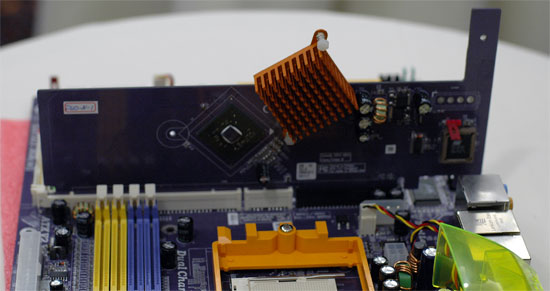
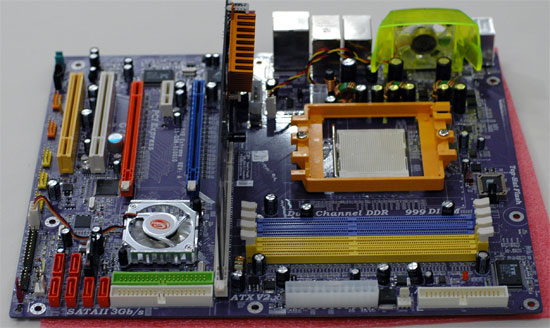
The idea of ECS S.D.G.E. is affordable dual-graphics for everyone - which will always be a good idea. There are limitations, however, in that NVIDIA and ATI must support the ECS solution with driver support. ECS says that they are working with both companies on driver support. They also speculate driver support may be more forthcoming once Crossfire is on the market and presents real competition to NVIDIA SLI.
We have our reservations about where the ECS solution might fit in the marketplace. This is especially true since NVIDIA and ATI are now talking of a future with mainstream pricing of SLI/Crossfire. However, we have to give ECS its due in presenting a unique and innovative approach to bringing dual graphics to all end-users at a low price.
PF88 Hybrid Motherboard
Processor options have become more complicated in recent months. There are more socket types, bus choices, different memory - all of which make the change from one platform to another more difficult.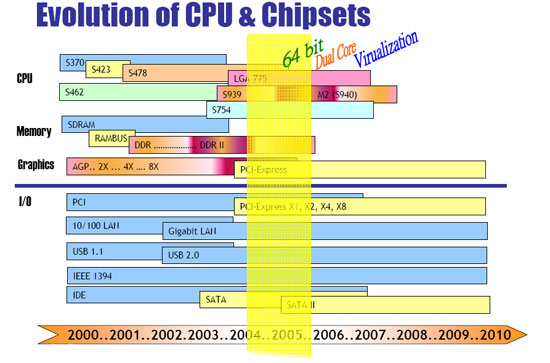
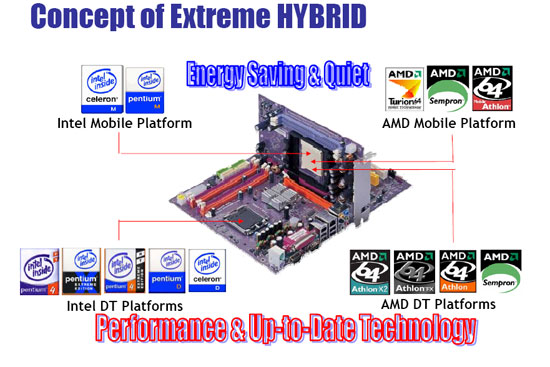
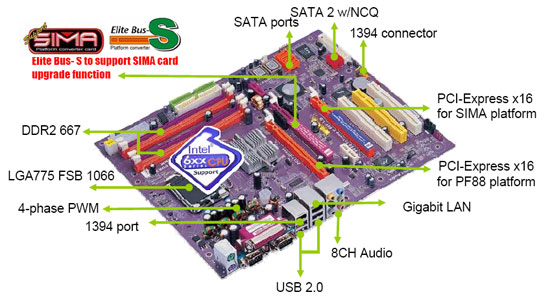
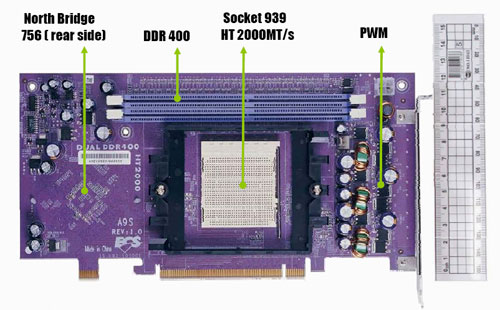
For Editors Day, ECS introduced two new SIMA modules.
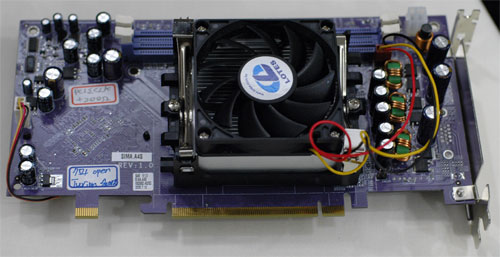
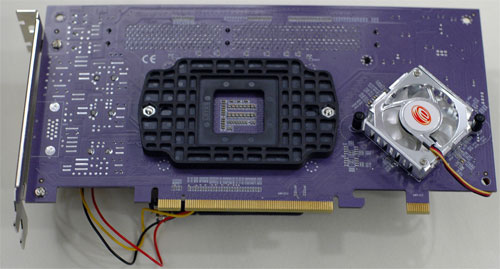
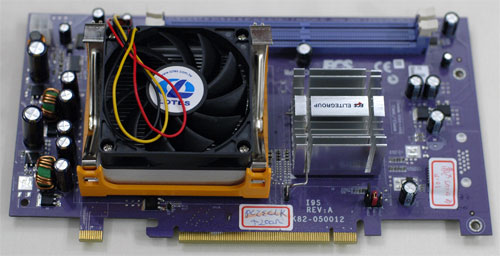
ECS was showing performance data, which claimed that there was no performance penalty in using the SIMA modules compared to motherboards based on the same chipsets. The chipset, however, will be an issue for some users, since the entire PF88 family and modules are based on SiS chipsets. We have reported good results in the past with SiS chipsets and it is satisfying to see these used in a really creative product like PF88. However, SiS is more often seen in low-end motherboards.
Where can PF88 and SIMA go in the future?
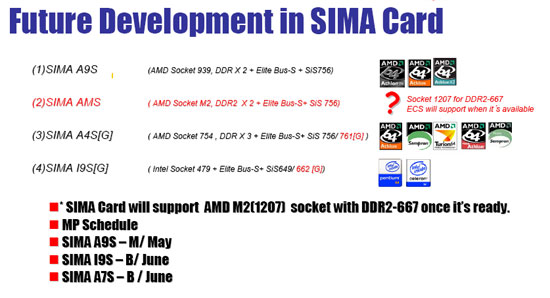
Intel and AMD
Intel
With ECS Editors Day dovetailing the San Francisco Intel Developer Forum, there really wasn't anything new from Intel. The presentations basically summarized the Intel presentations from IDF. For more info on upcoming Intel Desktop, Mobile, and Server solutions, you will want to take a look at our extensive coverage of IDF by clicking on Trade Shows above and following the nine articles covering IDF. You'll find in-depth information on all the new Intel processors, chipsets, VIIV, and other Intel developments.Intel basically positioned their new upcoming desktop processors as the best of current NetBurst architecture combined with Pentium M. However, from our perspective, the developments looked more like a recognition of the failure of NetBurst/Prescott and a future staked on the promise of Pentium M - with fewer pipelines, more cache, lower CPU speeds, yet higher performance.
AMD
The bigger surprise was perhaps AMD's presentation. It was a surprise not because AMD presented anything new or exciting, but because they really didn't talk about anything new. With all the new directions for Intel, we really thought that AMD might counter with a few announcements of their own. However, other than confirming that we will see an FX59 "soon" and a 5000+ or higher x2 in the near future, AMD didn't talk about anything new.At this point, we have to trust that AMD is confident that they can compete with Intel's new salvos in the processor arena. As to how they plan to do that, we can only say that they have shared little to nothing about the AMD future.
ATI
As you saw on page 2, ECS was very excited to talk about their upcoming ATI Crossfire boards for AMD and Intel. ECS even went so far as to announce September 14th as the Crossfire launch date, although ATI did not confirm this date. Since this was a show by vendors of support for ECS, it was not a surprise that ATI had brought with them working Crossfire systems based on the new ECS Crossfire boards.ECS was showing the bare PA1 Extreme board for Intel 775 (Socket T) processors.
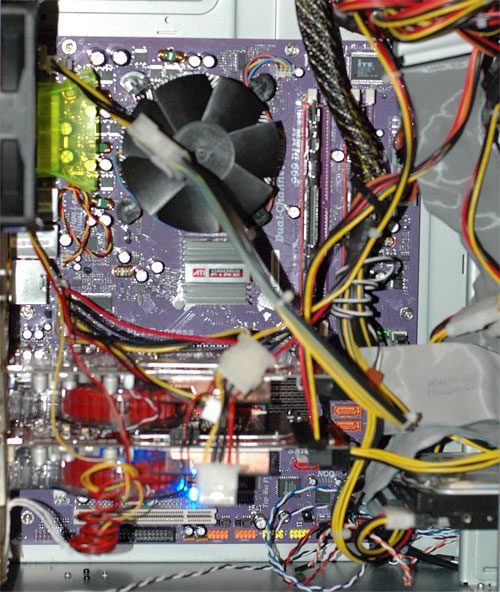
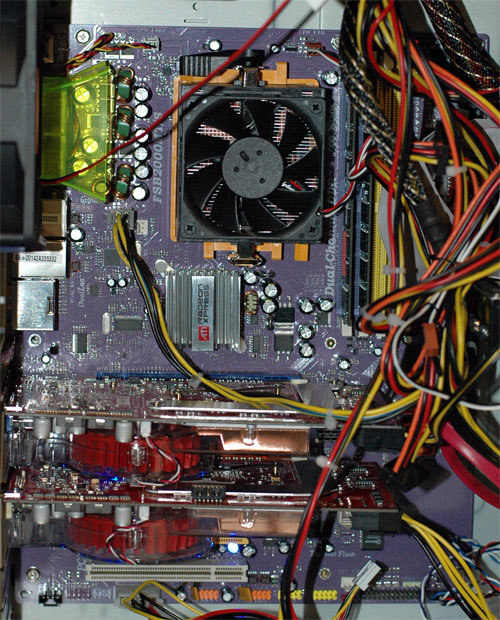
NVIDIA
ECS is already shipping the NVIDIA AMD motherboards based on the NVIDIA SLI chipsets.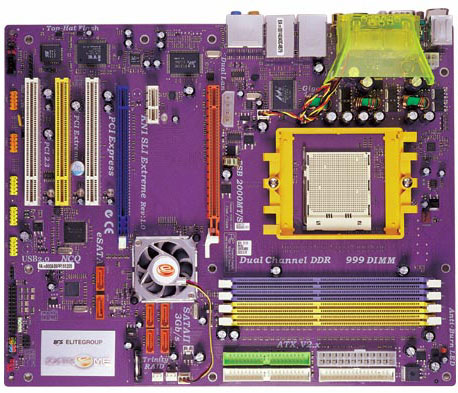
Shipments have just begun on the NVIDIA C19 version for Intel Socket 775. That board is called the PN1 Extreme and it is expected shortly in the retail channel.
One of the more interesting parts of NVIDIA's presentation was their announcement that the new dual x16 NVIDIA SLI would move to the high-end or enthusiast level of motherboard pricing. The current dual x8 NVIDIA SLI will move to mainstream pricing, where standard NVIDIA motherboards will sell for $100 to $120. This is good news for those who have wanted to use SLI, but were priced out of the market.
NVIDIA also emphasized that moving SLI to mainstream in the future will give buyers a more flexible PCIe slot arrangement - even if they never use SLI. The second x16 slot can function with future PCIe devices above x1 PCIe, which is a feature rarely available on lower cost nForce4 boards.
Our Take
The first ECS Editors Day was well organized and very well attended. It was clear to everyone attending that the company wanted to kick-start the "New" ECS and the Editors Day was an effective way to deliver that message.ECS did present quite a few innovative ideas for the motherboard market, though we have reservations on whether there is really a need for a lower-cost dual video solution like S.D.G.E. when both ATI and NVIDIA will be marketing their own SLI/Crossfire at mainstream prices. There is no doubt that the ECS solution is creative. We just wonder how many people out there will really buy it.
The PF88/SIMA card solution is also quite innovative. The idea of a future-proof base board with modules for new processors is appealing - particularly if not too many compromises in performance and flexibility are required. The future modules will answer those questions, but for now, the SIMA cards are certainly a unique approach to today's multiple sockets and varying features by platform.
We were very impressed with the creativity and innovation that went into the ECS products that were show-cased, but as we have said many times before, calling a product "extreme" does not make it so. Over time, we will see if ECS is serious about targeting the enthusiast market. They tell us that we will soon see new standard enthusiast level options on all their Extreme boards, along with overclocking performance much better than what we have measured with ECS in the past. We look forward to these changes, and time will certainly answer any questions about how genuine ECS is in the push into the enthusiast market.
Demonstrating ATI Crossfire boards now with plans for availability at launch are certainly steps that tell us ECS is serious. So are shipping NVIDIA SLI boards for both AMD 939 and Intel 775 processors, and the choice of a well-organized Editors Day to launch the "New" ECS. We had a great time at ECS Editors Day, and learned a lot about the ECS product offerings.
The questions that remain are whether or not any of these new boards provide the range of adjustment options and overclocking performance that will make them compelling choices for the enthusiast. ECS doesn't have to be the absolute top enthusiast board maker right now to get attention from the market. But they will have to provide reasonable enthusiast-level performance along with excellent value to get anyone's attention in the tough enthusiast market.
Time answers all these questions and we are looking forward to discovering in the future whether ECS delivers on the promise of a "New" ECS or whether this was all just lip-service. We sincerely hope that ECS has the internal conviction to truly turn the corner in the enthusiast market.

